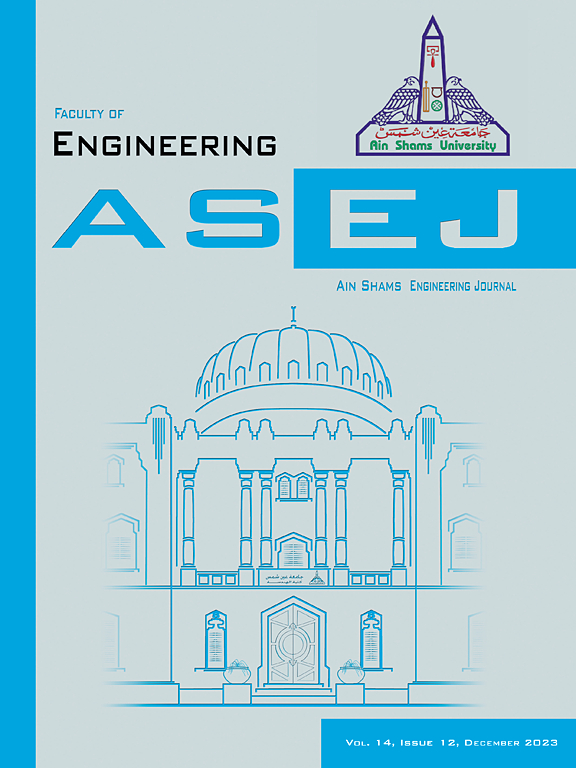A highly absorptive ultra-wideband nanoscale metamaterial absorber for solar energy harvesting from ultraviolet to Infrared spectrum
IF 6
2区 工程技术
Q1 ENGINEERING, MULTIDISCIPLINARY
引用次数: 0
Abstract
This paper introduces a metamaterial absorber (MMA) with a unique design, exhibiting exceptional absorption capabilities across a wide range of wavelengths including ultraviolet, visible, and infrared. The MMA unit cell, measuring 1000 × 1000 × 165 nm3, utilizes tungsten for resonating patch and ground layers, while Quartz performs as the substrate. The design enables absorption peaks of 99.80 %, 95.26 %, and 94 % at 423 nm, 666 nm, and 835 nm wavelengths correspondingly. The study delves into the absorption mechanism by examining the electric field, magnetic field, surface current, and effective parameter analysis. The MMA exhibits polarization insensitivity from 0° to 60° in both transverse electric and magnetic modes with minimal cross-polarization effects verified through polarization conversion ratio analysis. Including 90.08 % average absorption for a bandwidth of 516 nm spanning from ultraviolet to infrared spectra and a solar absorption efficiency of 90.05 %, this MMA holds promise for applications in solar energy harvesting.
求助全文
约1分钟内获得全文
求助全文
来源期刊

Ain Shams Engineering Journal
Engineering-General Engineering
CiteScore
10.80
自引率
13.30%
发文量
441
审稿时长
49 weeks
期刊介绍:
in Shams Engineering Journal is an international journal devoted to publication of peer reviewed original high-quality research papers and review papers in both traditional topics and those of emerging science and technology. Areas of both theoretical and fundamental interest as well as those concerning industrial applications, emerging instrumental techniques and those which have some practical application to an aspect of human endeavor, such as the preservation of the environment, health, waste disposal are welcome. The overall focus is on original and rigorous scientific research results which have generic significance.
Ain Shams Engineering Journal focuses upon aspects of mechanical engineering, electrical engineering, civil engineering, chemical engineering, petroleum engineering, environmental engineering, architectural and urban planning engineering. Papers in which knowledge from other disciplines is integrated with engineering are especially welcome like nanotechnology, material sciences, and computational methods as well as applied basic sciences: engineering mathematics, physics and chemistry.
 求助内容:
求助内容: 应助结果提醒方式:
应助结果提醒方式:


